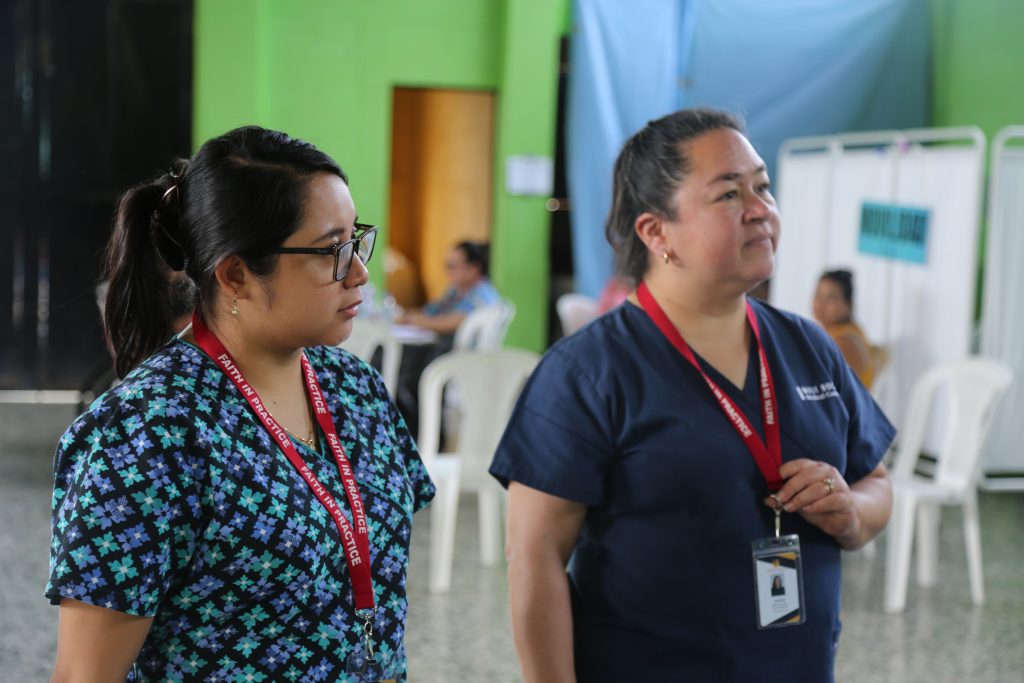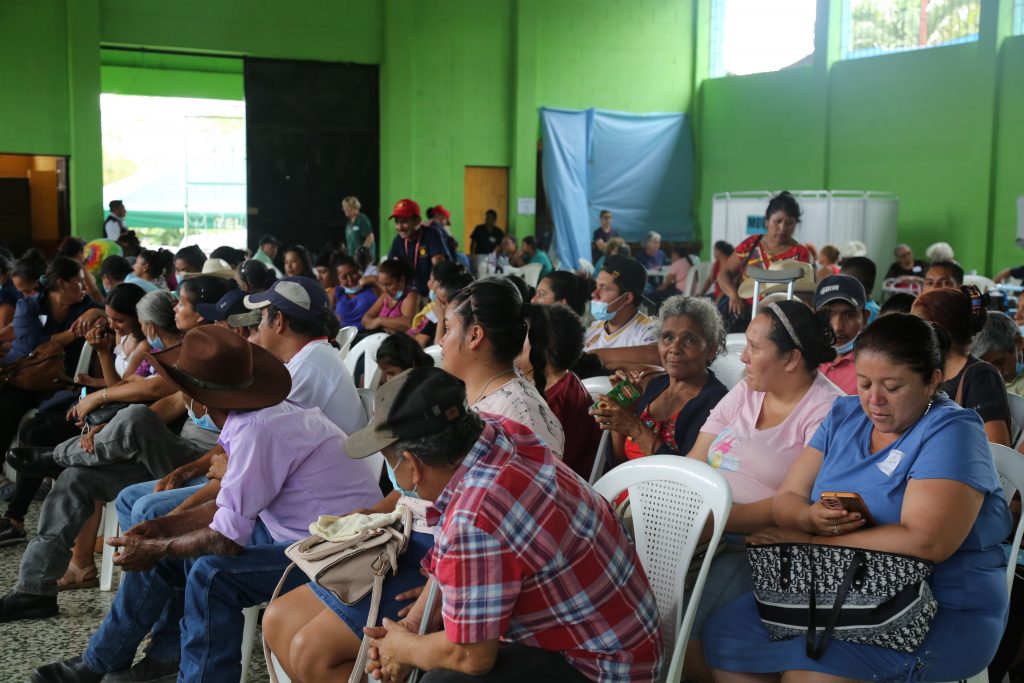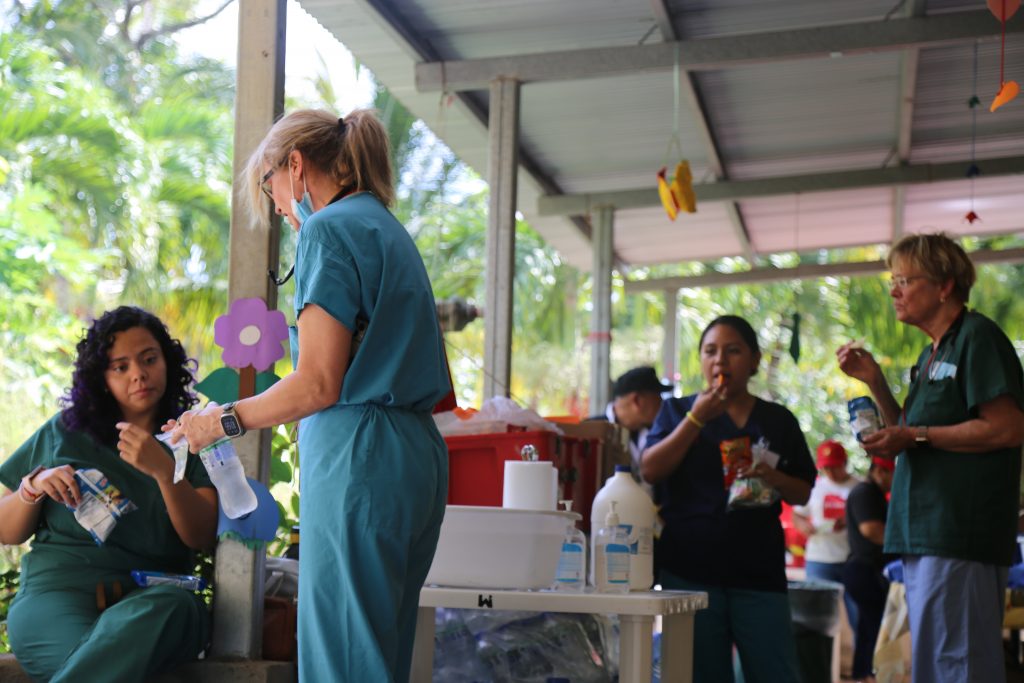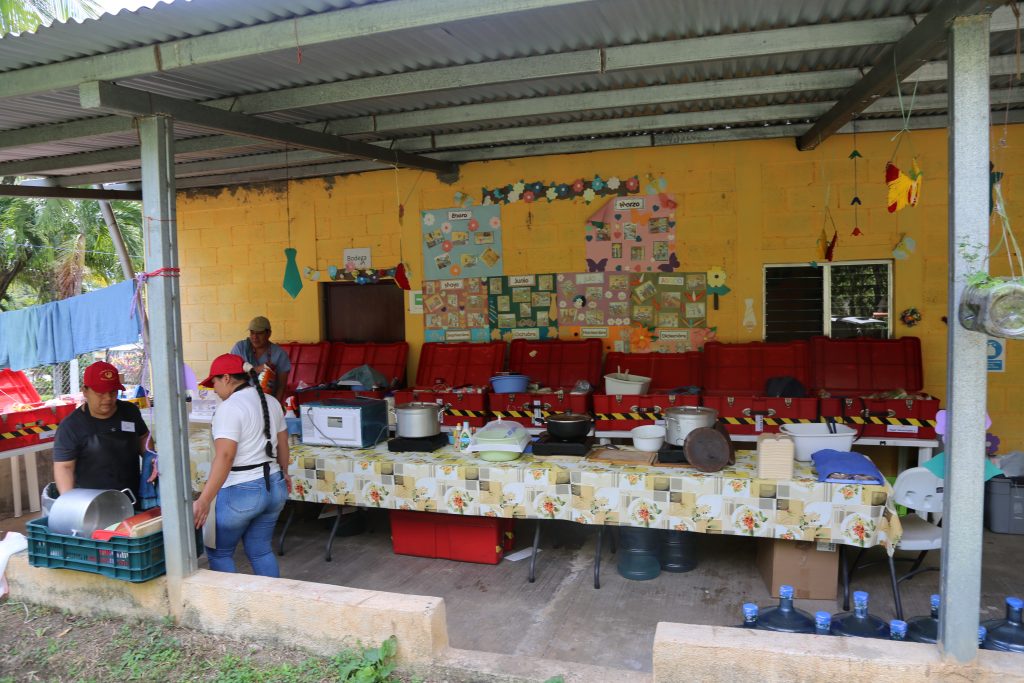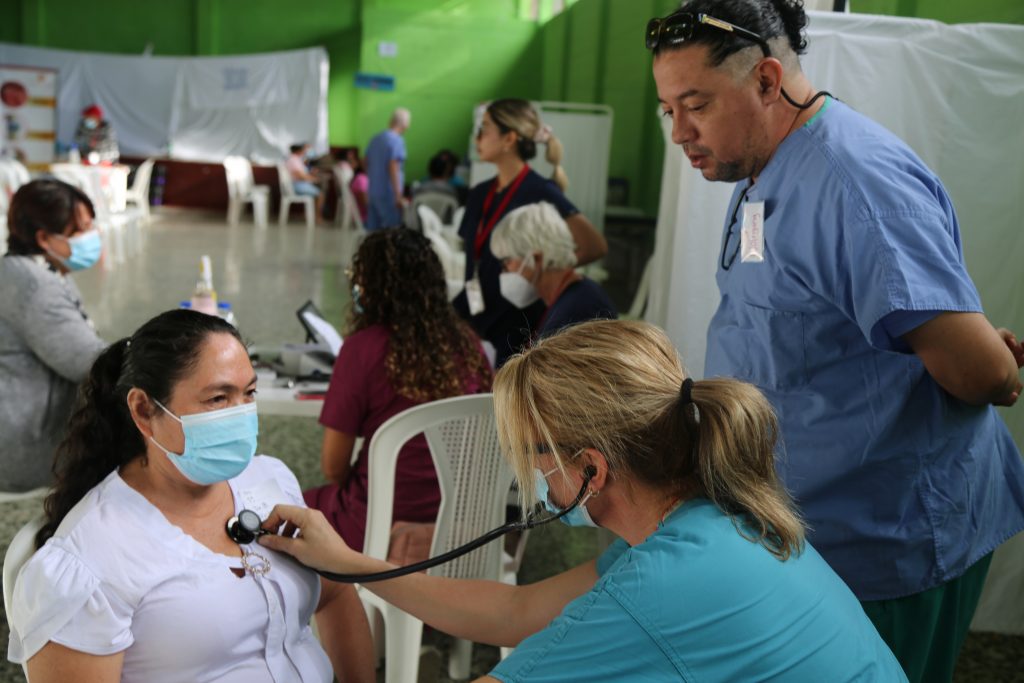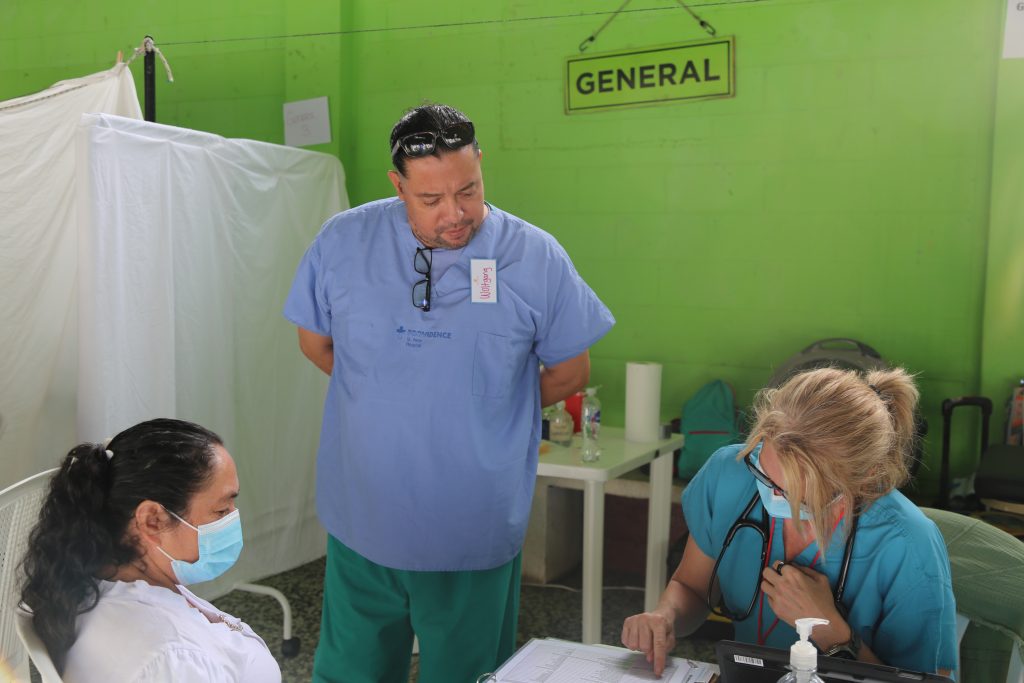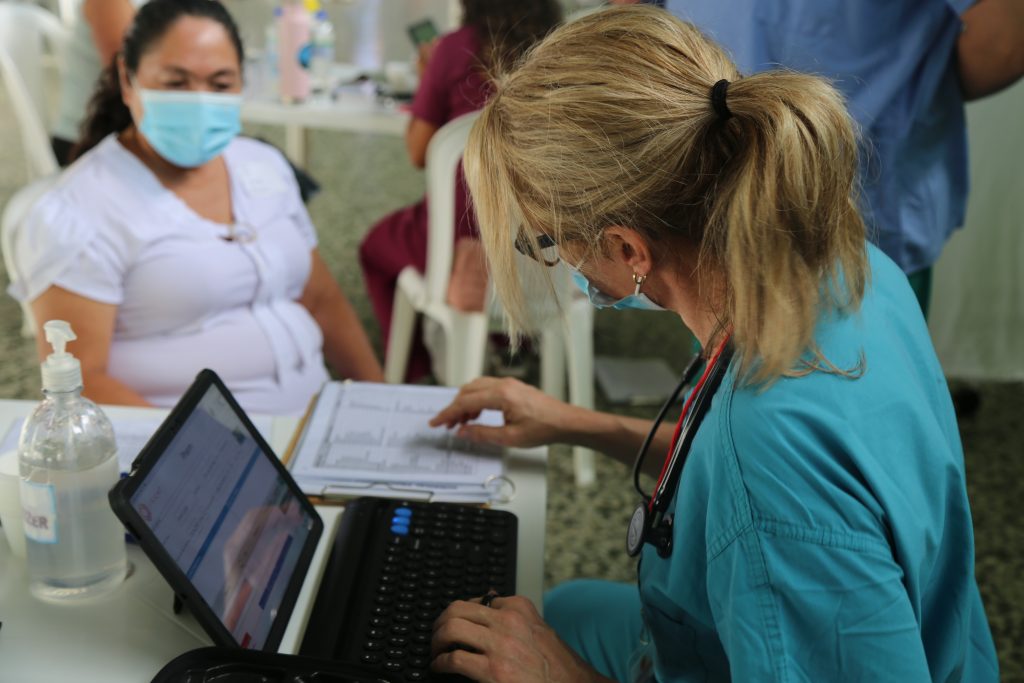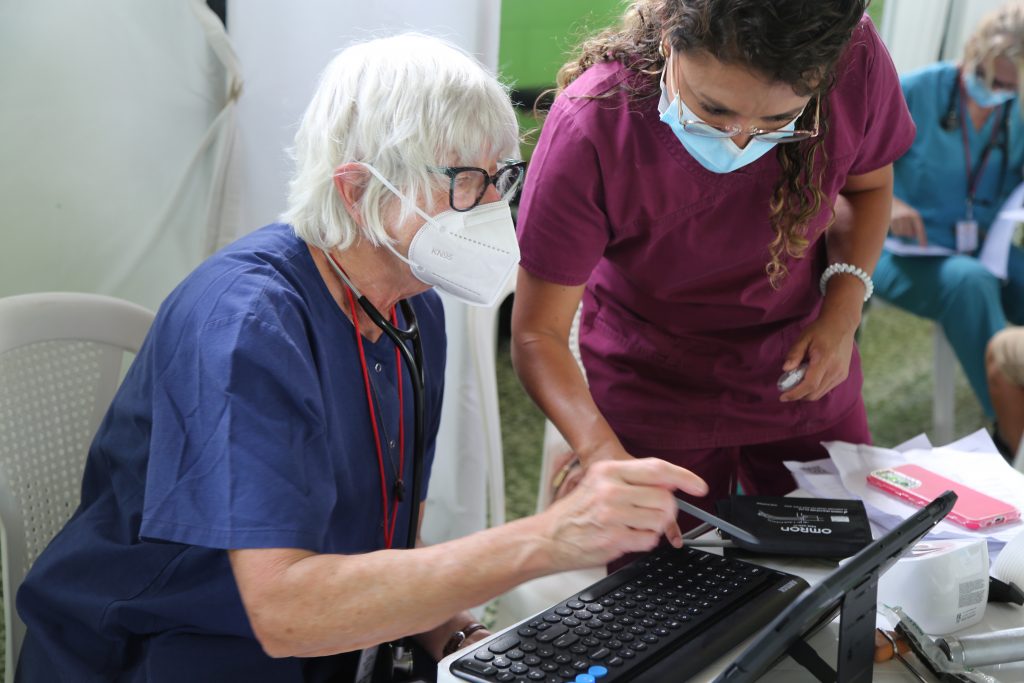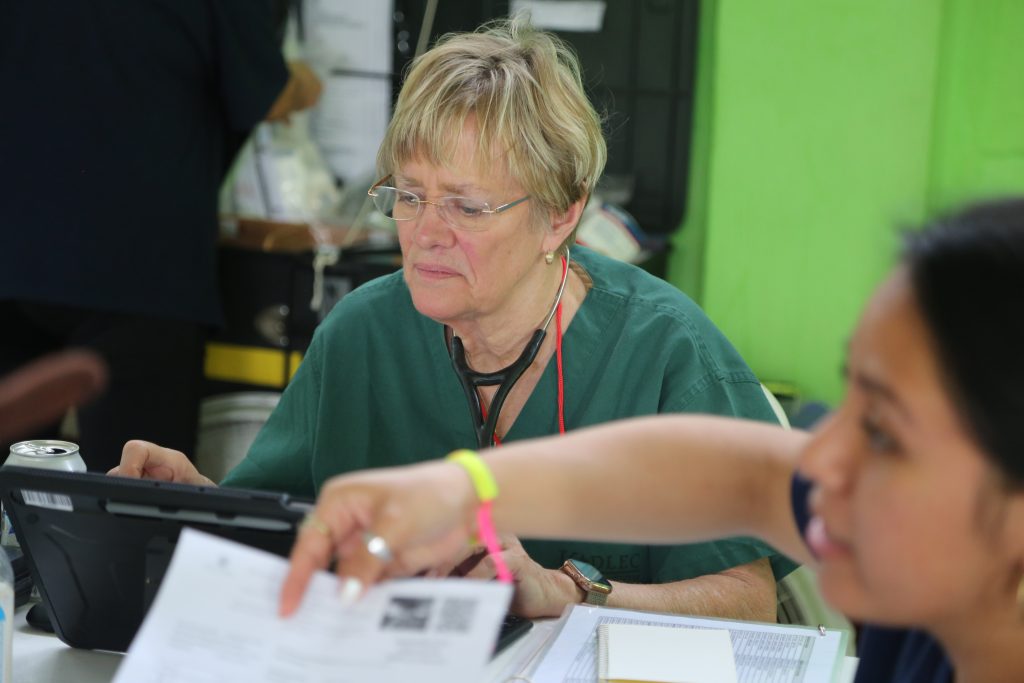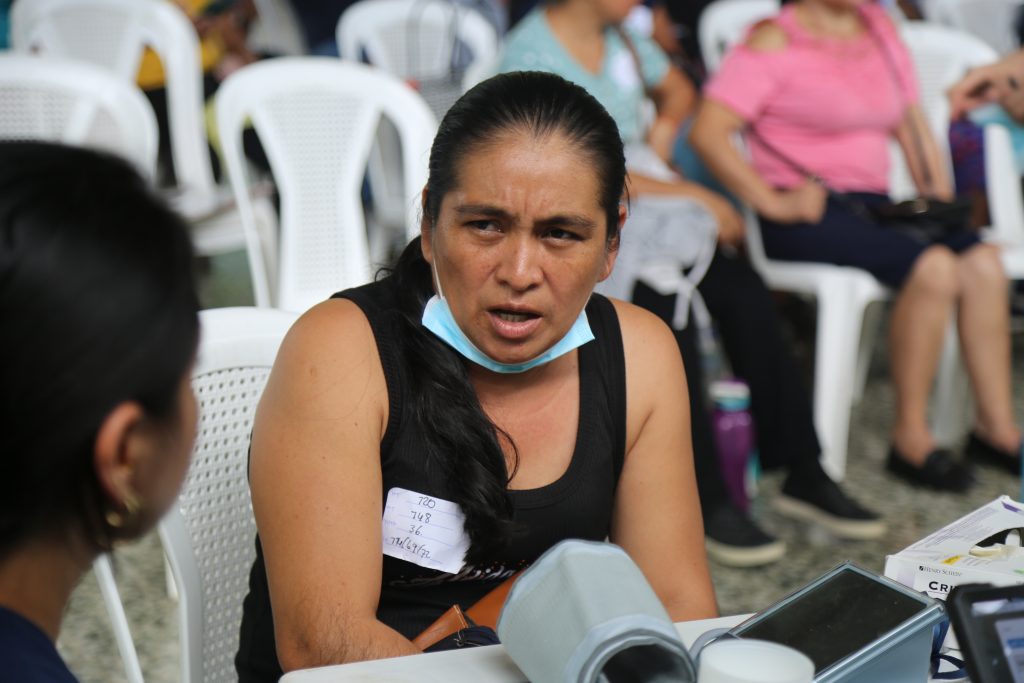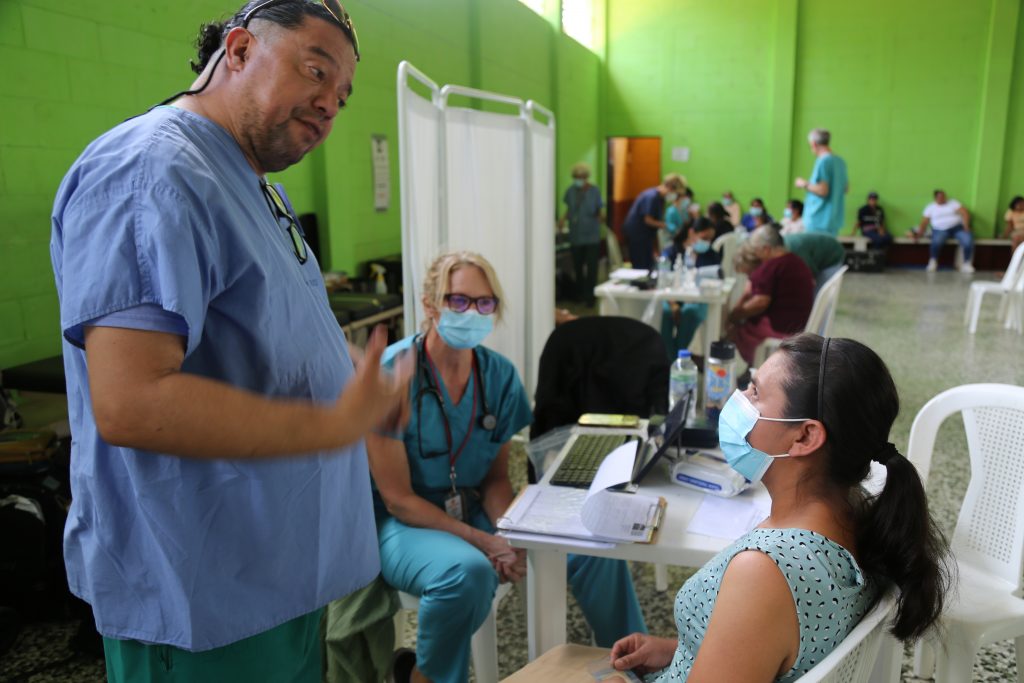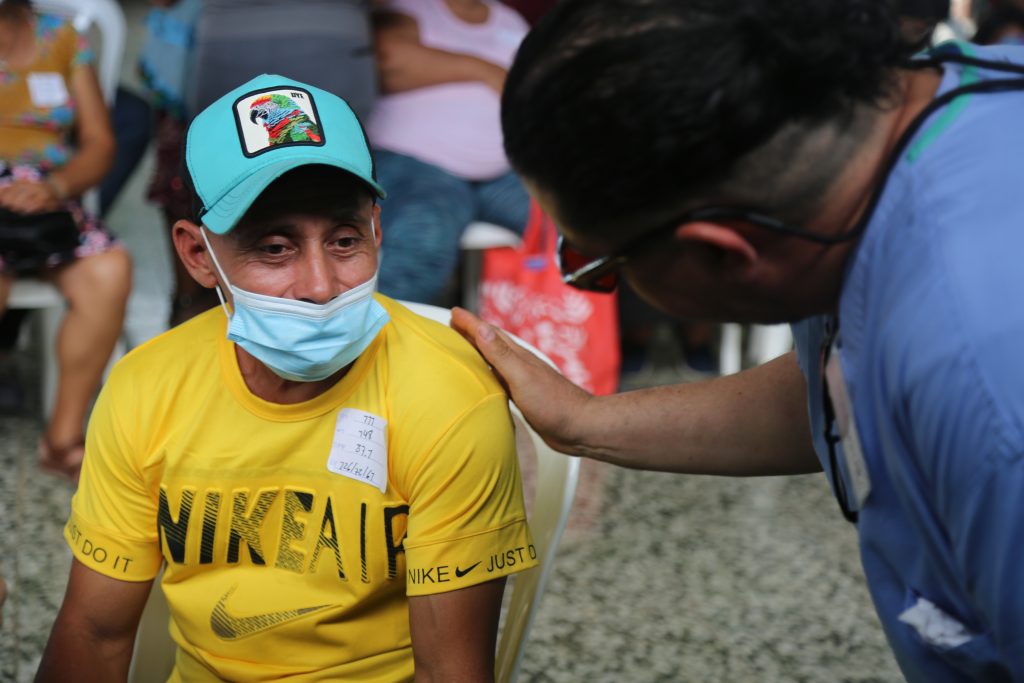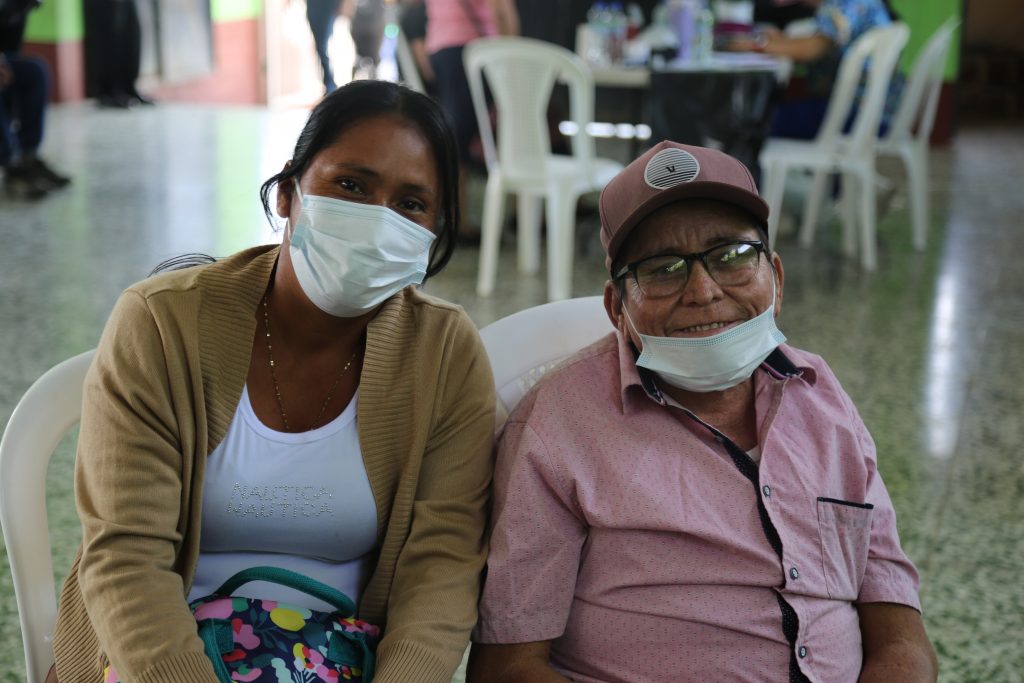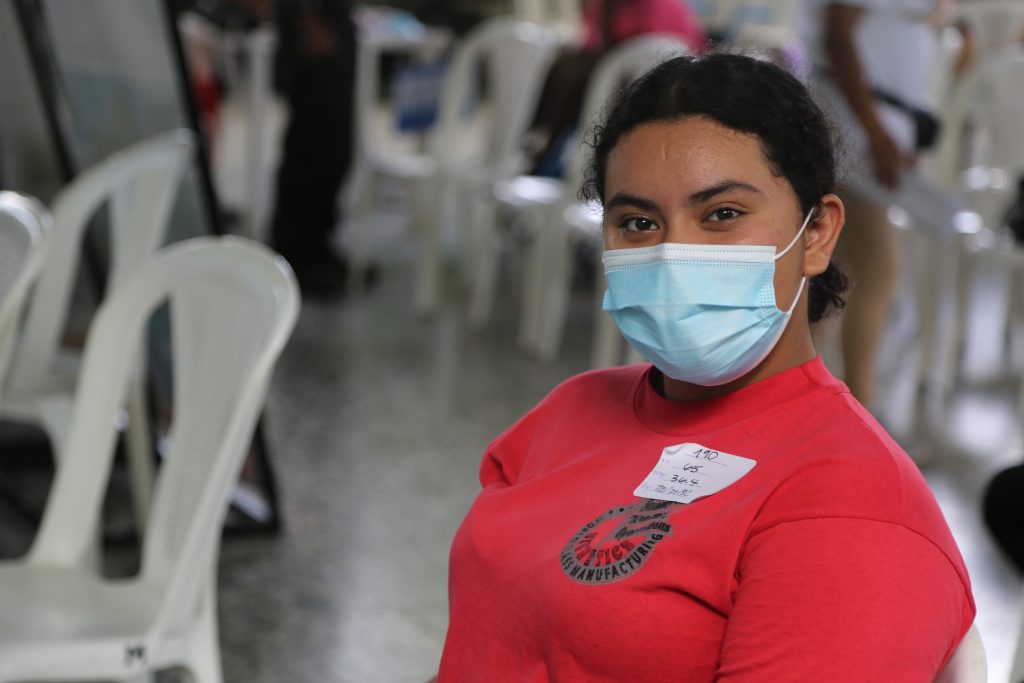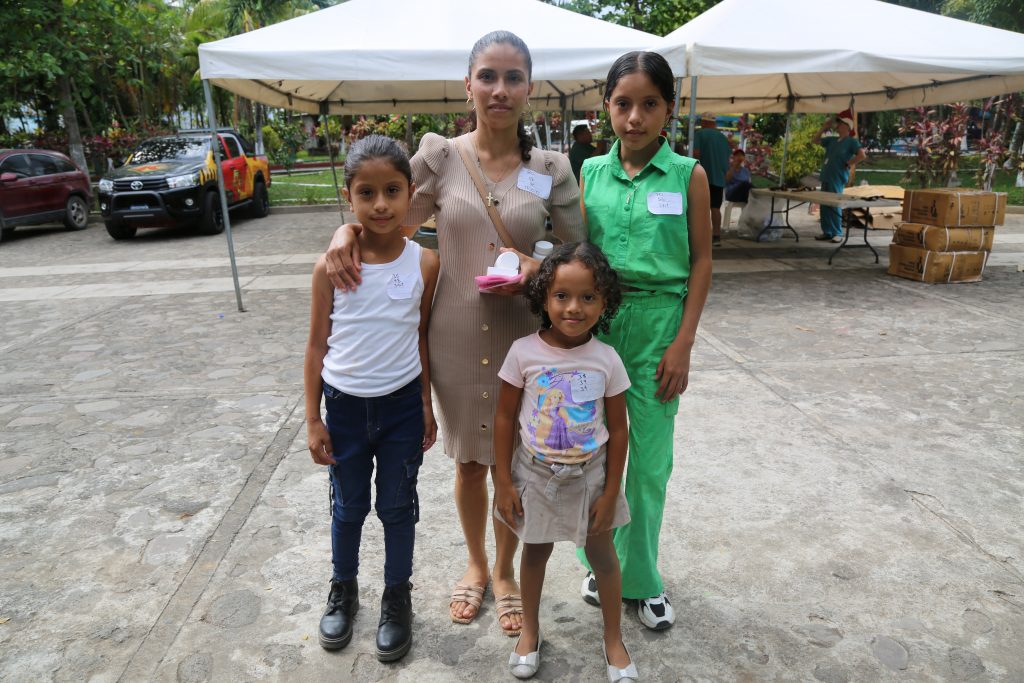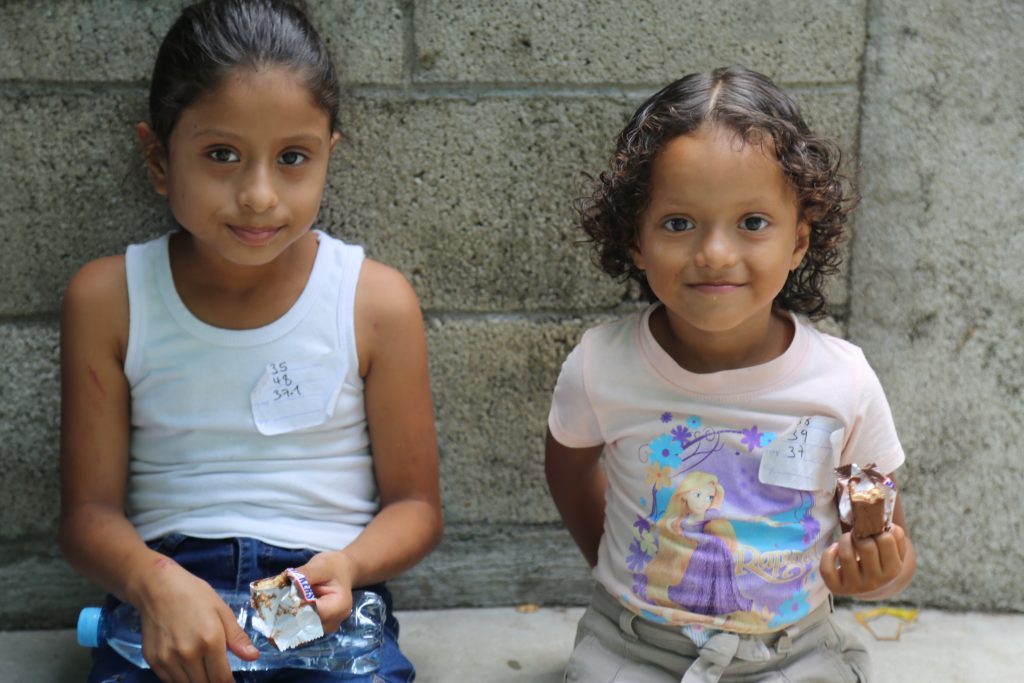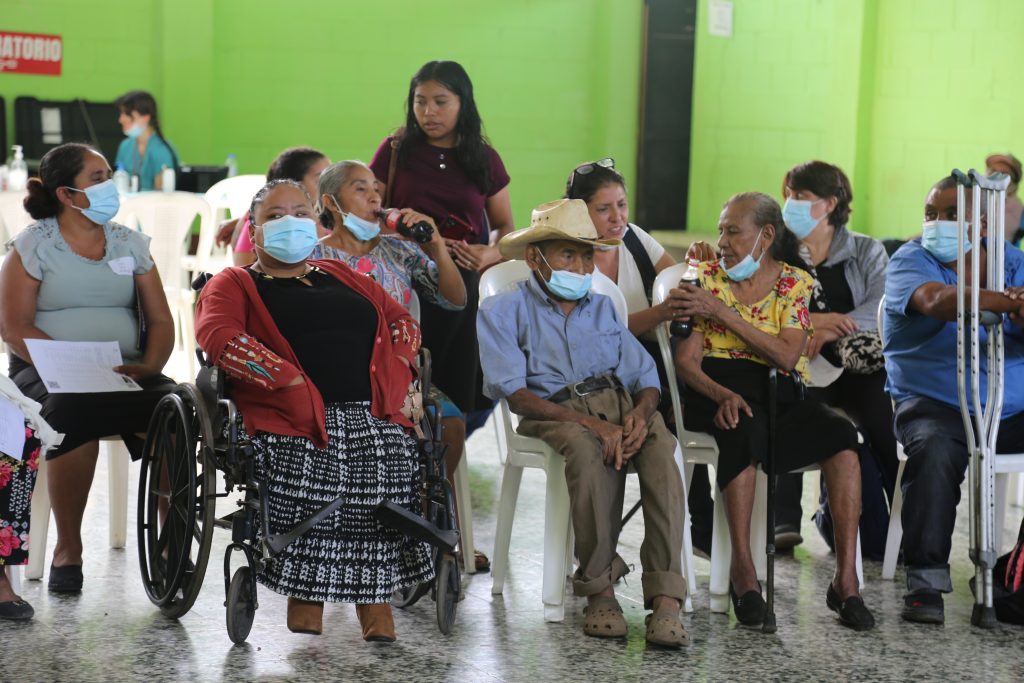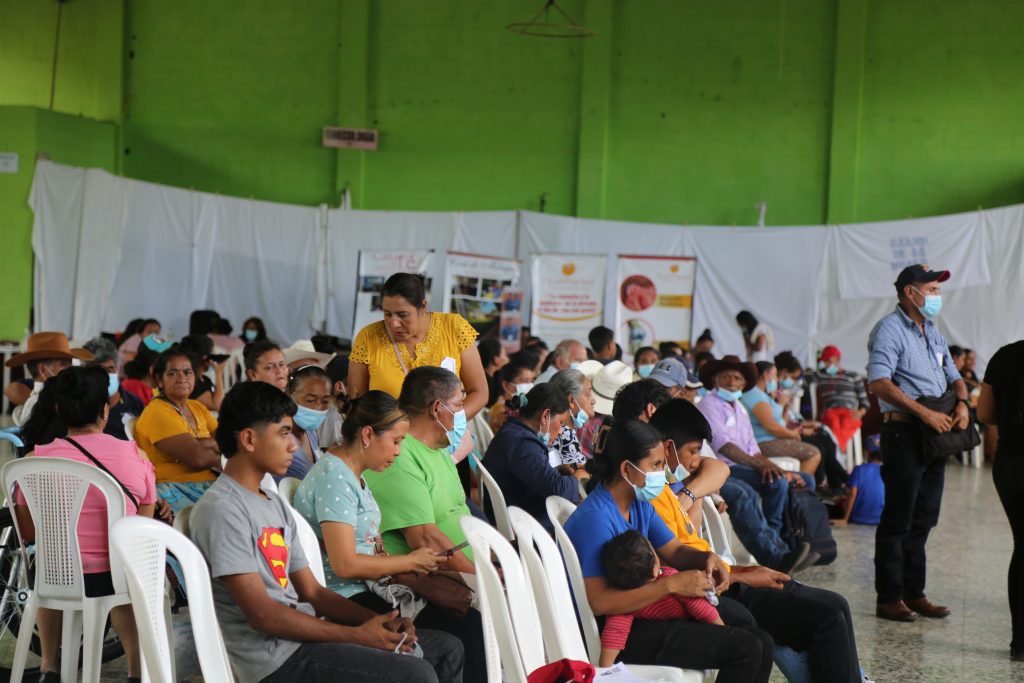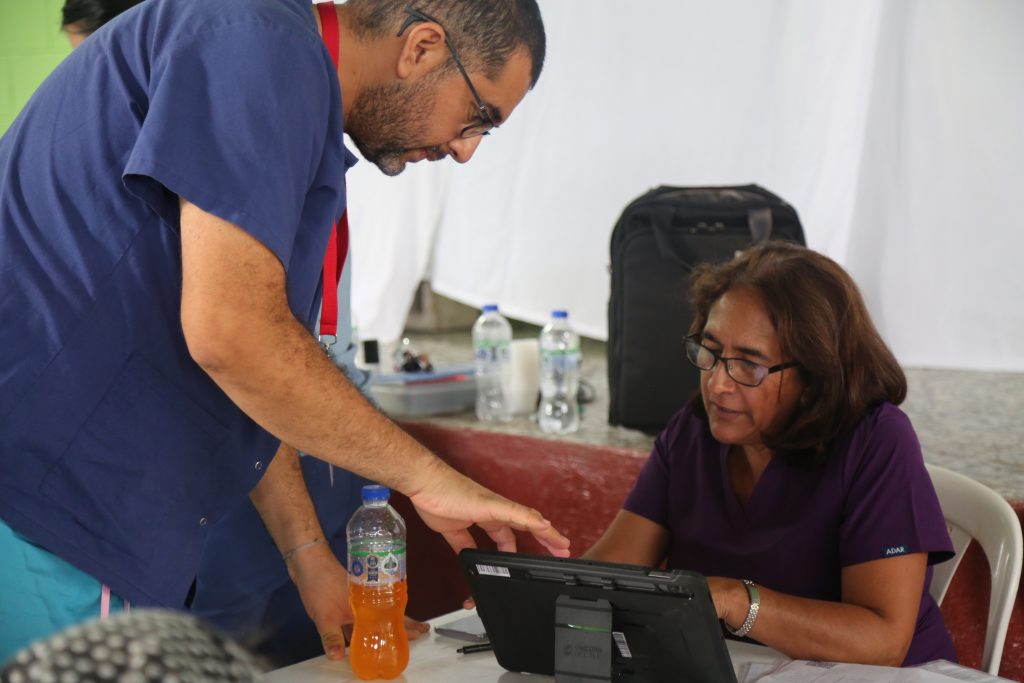First Day Of Clinic: The Longest Day One Yet…
For our first day at the clinic in Las Cabeza, Santa Rosa we saw 325 patients, 70 more than expected, and many were complicated cases. With such a large influx of complicated cases, we left the clinic at 7:30 pm, 3 hours later than our scheduled departure time. As many as 60 patients were referred out to surgery.
One such complicated case, a woman who had metastatic cancer. Since our clinic was not a surgical one, we didn’t have the necessary scans, or equipment, to distinguish the primary site of her cancer. But, according to our gynecologist, her physical showed she had intervaginal lesions, with suspected erosive cervical cancer, and it seemed to have spread to her bladder. Requiring a referral to the National Cancer Hospital of Guatemala.
Patients saw as many as 4 clinics. Some started at general medicine, went for an ultrasound, back to general, then to mobility, and then to pharmacy for medication. Waiting times to see 4 clinics? Some waited 5 hours and longer. If a patient came with their children to see the pediatrician, a patient was here all day with their families.
I was told FIP clinics are important occasions to Guatemalan families, so they dress-up in their best outfits for the occasion. Many saw their providers and wanted to take photos with them, seeing it as a cherished memory. As the day came to a close, we received grateful hugs, and goodbyes. Making this experience just as memorable.
The mobility clinic saw extreme cases as well. There our physicians measured how impactful movement was to their daily lives. Some had amputated legs, many were extremely diabetic, needed wheelchairs, had movement issues, congenital deformities, arthritis, and needed orthopedic care which in one case arthritis medication was injected in both legs for pain by one of our physicians. Anyone who received a wheelchair, walker, or cane were educated on how to walk with the handicaps that they have. All were extremely thankful, and one woman said to Janice, (our MD) “thank you for your hands.” It was an exhausting day, but a very successful one.
Wheelchairs were assembled outside the community building by Guatemalan volunteers, and FIP volunteers. To assemble one wheelchair requires two people, time and focus. Thanks to their vigilance, as many as 125 wheelchairs, and 3 pediatric wheelchairs will be assembled by the end of the week and given to those who are in desperate need. These wheelchairs completely change the quality of life of both the caretakers, who were used to carrying their loved ones, and their loved ones.
For the pediatrics clinic, they saw children as young as 3 months old, and as old as 18. It seemed that this was their first time being checked by a physician. While others sorely needed a referral for a needed surgery for an injury that may have healed incorrectly from months to years ago and are hoping for corrective surgery.
These clinics hold a special place for women. Women’s healthcare in Guatemala is still misunderstood, and in one corner of the community building, Guatemalan volunteers were seen with models explaining basic functions and healthy habits to an audience of women.
Gynecology saw a wide variety of gynecologic and obstetrical problems. One such case was a follow up on a post op course from a hysterectomy patient from a local physician, and we are happy to report she is doing well without complications. They saw minor surgical office procedures that significantly helped the quality life of patients, such as opening up a bartholin cyst which relieved a woman’s pain. As a team all around, they promoted women’s health with prevention of cervical cancer in the VIAA- Thermo clinic, which is still the leading cause of death in women in Guatemala.
The only way to possibly diagnose any cancer is by biopsy, and now we have the capability of it in the village. The gynecology team responsible for detecting possible cancer in women included the Guatemalan Medical Director, her staff, and FIP’s own physicians and translators.
The ultrasound clinic saw people of every age also, from 1-month-olds to 80-years-olds. All with separate issues, and the severity ranged from nothing to benign, to extreme. Being situated in a small outlier room, the ultrasound clinic was dark and humid.
Did I mention it was humid? As the day progressed fans were turned on, and sweat trickled down our clinicians, and patients backs. The humidity didn’t stop the overflowing gratitude a provider and patient felt for the other however. Grateful interactions between patient and provider were constant.
Our poor general medical clinic probably had the highest patient load of all clinics. Through-out the day, three lovely women and their translators listened to patients hoping to resolve their healthcare problems. As other clinics were winding down, our general internists still had a large patient volume. Determined to see everyone, patients waited long hours, some for the first time in their lives seeing a doctor; no-one was turned away.
Organization was everything! For the first time, Faith In Practice has utilized iPads to input patient information, history, treatment, scans, and prior conditions. This allowed patients to wait without the hassle of bringing paperwork between clinics. This also allowed physicians to see what their colleagues wrote, and eased the referral process. From a pharmaceutical perspective, the iPads made it much easier to see what was being prescribed, and they could see the physicians notes for correct prescriptions. Overall the process was much more efficient, if not cumbersome at first for our physicians. From an Angelino’s perception, it was cool seeing the iPads in use. High-five, and surfs-up!
Pharmacy saw chronic disease, diabetes, hypertension, and infections. Prescriptions included anti-diabetics, antibiotics, and antihypertensives. They gave out multivitamins, and anti-inflammatories. A high volume of these types of medication were distributed through-out the day. Since the pharmacy is typically the last stop for patients on their health care journey, the pharmacist was the last clinic to close.
None of the above would be possible without triage. Triage was situated outside, and along the edge of the community building’s wall (the shady side until about 2 pm when the sun moved). FIP volunteers, alongside the locals imputed patient information, and took their vitals. Intake of patient’s complaints made waiting times shorter.
It was the longest clinic day of our week if we’re lucky, and in FIP history I’m told.
Since our hotel is another municipality which is one hour away, we only had time to eat dinner before heading straight to bed before the next day.
Eleanor
Team Blogger


